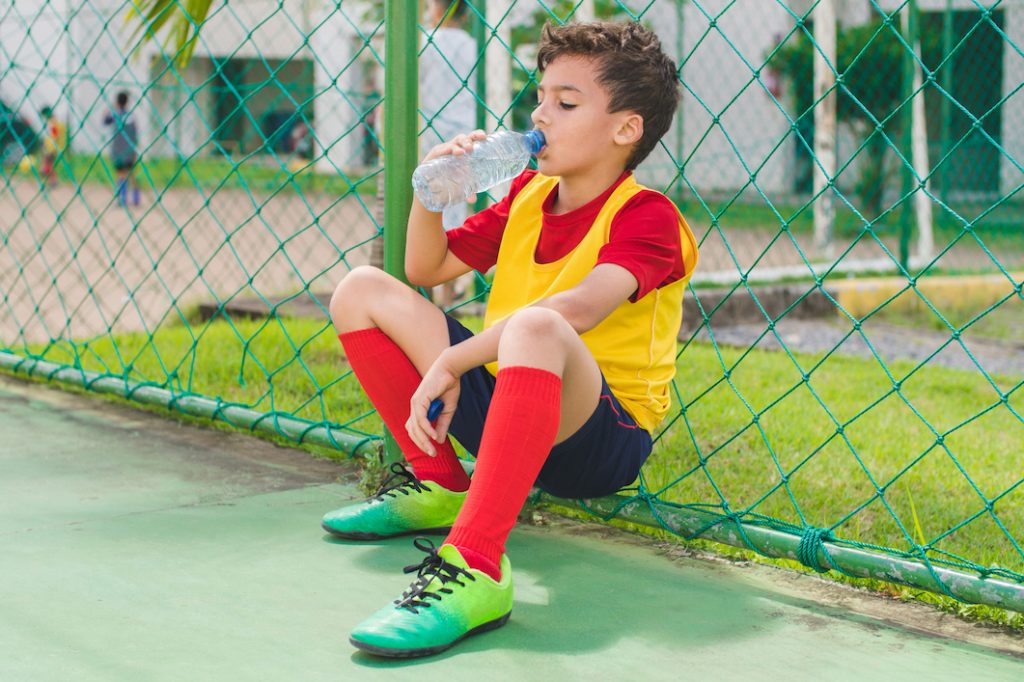
The Top 3 Exercises for Developing Young Athletes
Strength and conditioning is no longer the property of top tier professional and D1 athletes. Each year the understanding of how important it is to the development of young athletes becomes more common knowledge. Many high school programs even have their own strength and conditioning coaches to help get the most out of their athletes and keep them safe on the field. So since its common knowledge then every young athlete must already be doing it right?
When our athletes go off to play sports in college, we’re always amazed to hear how little experience their teammates have in the weight room. Many players and coaches believe that if they just run a combination of sprints and distance and throw in a couple plyometric drills here and there then they’ll “get in shape” for their sport. Unfortunately getting good results just isn’t this simple. In a most recent example of this, we had an athlete go to a Division 1 soccer program only to outperform everyone on the team in every single physical test. Why? Because no one else on the team was lifting.
It doesn’t take that much to start producing results. A young athlete doesn’t need to be squatting heavy three times a week to see improvements. In fact, the less experience someone has in lifting, the less they need to do to start seeing the results from it. Even so, you need to be doing the right things in order to optimize those results. Below are my top three basic exercises to get the most bang for your buck when training young athletes.
Dumbbell Bulgarian Squats
Every athlete needs to be able to produce power with their legs and most people go directly to the squat rack to achieve this, but traditional barbell back squats aren’t the best way to build strength for your sport. In the vast majority of athletic movements, you have to be able to produce your power with one leg at a time, which is exactly what you do when performing Bulgarian squats. Not only is there more direct carryover in terms of single leg force production, but you also work your upper traps, core, and grip strength by holding the dumbbells by your side. There’s also the added benefit of the Bulgarian squat being a lower risk exercise than a barbell back squat. Because the load is lighter and is being held by your sides rather than stacked directly on your spine, your risk for a back injury is much lower. Finally, even though the external load (the weights you’re holding) is lighter, the load that your legs are lifting is actually greater because a single leg is lifting your entire body weight plus the external load!
Rotational Box Jumps
Sports require explosiveness and rotation. There is no sport that does not require some form of rotation, and there is no sport where you would rather be slow than explosive. When you have an exercise that can combine those qualities as well as deceleration mechanics then that’s a win-win-win. That’s exactly what you get with the rotational box jump, and it’s something that you can progress or regress to the appropriate difficulty and focus on the athletic component that you want. Want to work on the vertical power output component? Just do a 90 degree turn to a higher box. Want to work on more rotational power? Lower the box and turn 180, 270, or even 360 degrees. Regardless of what you do though, focus on a quiet and controlled landing to maximize benefits of the exercise.
Side Planks
We couldn’t have gone through this whole article without mentioning a core exercise, and if we’re going to put a core exercise in here, this has to be the one. One of the most important factors in preventing injuries is core strength. Whether the injury is to a knee, hip, back or shoulder, it can often be traced back to poor core performance to at least some degree. The side plank gives athletes the lateral stability that they need to stabilize all of the joints I just listed. It builds strength in the key areas of the obliques, the glutes, and the shoulder stabilizers. The important part to focus on for this exercise to work is not just holding yourself up, but maintaining tension throughout your body and breathing deeply while doing so. When doing the side plank, you should constantly be thinking about keeping your hips high, pushing the ground away from your body with your elbow, and keeping your glutes tight to prevent your body from jack knifing. If you do this right you will feel everything from your glutes, to your abs and obliques, to your shoulder muscles working.
As I said earlier on, it doesn’t take much to start producing results. Just start hammering away at these three exercises a couple times a week and you’re bound to see your speed and power increase quickly!
Steve Zarriello is a Certified Strength and Conditoning Specialist, and the owner of Olympia Fitness and Performance, located in Cranston, RI. He has been training clients of all different ages, abilities and backgrounds to help them reach their specific goals for almost 15 years. His primary focus is on working with golfers to help improve their ability to play the game and keep them pain free.

